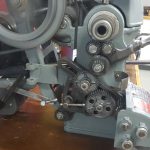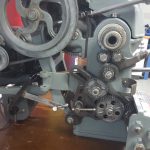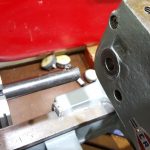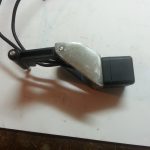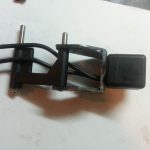Golf Reverse Camera
The rear VW emblem on the golf serves a number of purposes:
#1 – It’s an emblem.
#2 – It’s the latch and handle for opening the rear hatch. Pushing in at the top of the emblem causes the hatch to unlatch and the bottom of the emblem swings out to use as a handle for lifting.
#3 – (what this is all about) It’s a back-up camera. When in reverse, a small camera is pushed through a trap door behind the emblem causing the emblem to swivel up. The golf’s controller knows not to unlatch the hatch if it see the emblem swivel while in reverse (because it’s the camera that has swiveled the emblem, not a person).
Having a backup camera on a car that I can practically lean back and touch the rear windshield from the driver’s seat doesn’t make a lot of sense, most of the time. I have gotten used to it though – it’s great for towing and I have lines on the garage floor that allow for precision parking every time, maximizing usable garage space. A few weeks ago the camera stopped working; I investigated further and found that one of the arms of the extension mechanism had broken off. At that time I grafted a sheet metal strap onto the plastic mechanism and melted parts of it back together. This lasted a about a week, so this weekend I re-produced the entire plastic part completely with steel.
During the many cycles of assembly and dis-assembly of the camera mechanism I encountered a problem where any time it was put into reverse the hatch would open! This is kind of a funny outcome since it’s still fulfilling the purpose of more visibility when in reverse, just in a different way. This would be inconvenient, to say the least, so I tracked the problem down to some frayed wire connections. The shorted connections caused the hatch switch signal not to be ignored when the camera was deployed; re-terminating the wires fixed the problem completely.
Cupholder
Today I fabricated a cup holder basket. It’s made entirely out of the frame from one of those annoying corrugated plastic signs someone had planted in my yard, so it was basically free. There was an original accessory cupholder of a similar design that I got the idea from. The original was more in tune with 1960’s european beverage size sensibilities; I’ve created mine to work with 2010’s US sized cups.






